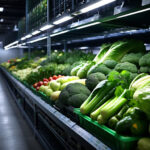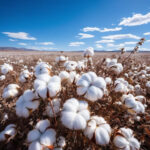The impact of agricultural practices on wild bees has been an important consideration. Discussions in the industry often focus on honey bees (Apis mellifera). However, mounting scientific evidence has shown the importance of wild bees as pollinators safeguarding crop yields and as critical contributors to biodiversity. For biodiversity in particular, wild bees are even more important than honey bees. Unlike honey bees, many wild bee species are endangered. Growing the wild bee population can increase biodiversity and sustainability of agriculture.
Comparison between Honey Bees and Wild Bees
Pollinator decline is a significant concern because pollinators are essential to humanity’s survival. Public discussion of this issue has emphasized honey bees, often overlooking the importance of wild bees and other pollinators. Honey bees have received the most public attention because they are important for agriculture and face many challenges, such as loss of flowering habitat, varroa mites, pathogens and insecticides.
However, despite these challenges, the ecological problem of bee pollinator decline is not primarily related to the honey bee population but to the decline in wild bee populations. Honey bees raised by beekeepers are agricultural animals, similar to livestock, and not wildlife contributing to biodiversity. High densities of honey bees have had a negative impact on wild bees due to competition for floral resources.

Factors Contributing to the Decline in Wild Bee Populations
Numerous factors have contributed to the decline in wild bee populations. Loss of appropriate habitat has been the most critical issue by far. The quality of habitat, including the variety and quantity of flowers during the vegetation period, and the availability of suitable nesting places nearby significantly affect species variety and abundance among wild bees. Creating and preserving habitat for wild bees is among the best ways to help their populations grow.
The Role of Wild Bees in Pollination and Biodiversity
The opportunity for wild bees to benefit agriculture is highlighted by the shift towards regenerative agricultural practices, which emphasize natural and sustainable food production. Wild bees help increase crop yields by supplementing the pollination of honey bees and serve as important insurance for growers by providing an alternative means of pollination in situations in which the activity of honey bees or other pollinators is inadequate. Wild bees also aid in pollinating wild plants in ways that honey bees do not.

Opportunities for Promoting Wild Bee Populations
Additional research is required for a comprehensive grasp of wild bees’ biology and their potential advantages, as honey bees have been extensively studied and are better comprehended. An increased understanding of wild bees will reveal opportunities to promote these species through the use of new technologies in the interests of biodiversity and sustainable agricultural production. Various initiatives have already begun in this area and could have a major positive impact.
Personal Experience and Observation of Wild Bees
I became increasingly interested in the significance of wild bees in the context of sustainable agriculture and began to observe them firsthand. The interactions among these bees and their interactions with the rest of the fauna and flora are fascinating. I discovered a new world through macro binoculars and macro photography. Below is a selection of photos that I took of 30 different species of bees, one from each genus present in the border triangle of Switzerland, France and Germany. These photos represent all six families of bees that exist worldwide (a seventh family exists only in Australia).
Acknowledgement: I would like to thank Andreas Müller, Philipp Heller and Hannes Petrischak for their support in determining the bee species, and Patrick Flueckiger for editing this text.
Click Here For More Agriculture Related News
Conclusion
Wild bees play a crucial role in agriculture and biodiversity, yet their importance is often overlooked in favor of honey bees. Understanding the factors contributing to the decline in wild bee populations and promoting their habitats are key steps towards enhancing biodiversity and ensuring sustainable agricultural practices. With continued research and conservation efforts, we can protect and promote wild bee populations for the benefit of ecosystems and food production.
FAQs
- How do wild bees differ from honey bees in their role as pollinators?
- Wild bees are more efficient pollinators than honey bees for certain crops. They also have different foraging behaviors and preferences.
- What are some practical ways to promote wild bee populations?
- Creating wildflower meadows, preserving natural habitats, and reducing pesticide use are effective ways to support wild bee populations.
- Are wild bees more susceptible to certain diseases or parasites compared to honey bees?
- Yes, wild bees can be more vulnerable to certain diseases and parasites due to factors such as habitat loss and exposure to agricultural chemicals.
- How can farmers benefit from the presence of wild bees on their farms?
- Wild bees can help improve crop yields through their pollination services, reducing the reliance on honey bees and increasing overall biodiversity.
- What can individuals do to help protect wild bee populations?
- Planting bee-friendly flowers, providing nesting sites, and supporting conservation efforts are ways individuals can contribute to protecting wild bees.










